Site Search
Displaying results 161 - 170 of 574

Resource | Tools,
Palliative care seeks to relieve suffering and improve quality of life for those with life-limiting conditions. It is a holistic approach that improves quality of life for patients and their families by addressing the psychosocial, legal, and spiritual problems associated with life-threatening illness. Palliative care has been shown to be highly effective in managing pain and physical symptoms, and can improve adherence to medications. It is a core component of health care and of the human right to the highest attainable standard of health. It is also connected with a range of other rights and is increasingly recognized as a stand-alone right.
This toolkit is intended to serve as a resource for organizations considering advocating for increased access to palliative care and pain relief as a human right within the United Nations human rights system. It clarifies what human rights are and how they are relevant to palliative care, as well as what the UN Human Rights System is. It also presents why and how to engage with the UN human rights system to advocate for increased availability and accessibility of quality palliative care and pain relief.
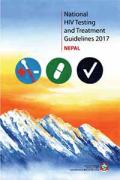
Resource | Guidelines,
Based on the WHO "Consolidated guidelines on HIV testing services" that recommend training lay providers in using rapid diagnostic tests, independently to conduct safe and effective HIV testing services, innovative service delivery approaches in "Nepal HlVision 2020" include intensified testing to reach key populations through facility-based outreach and community-led in-reach; linking testing to treatment.
Since the inception of Nepal's anti-retroviral treatment (ART) programme in 2004, under the leadership of the Ministry of Health, National Centre for AIDS and STD Control, the country has taken many measures to scale up ART with the objective of reaching everyone who needs treatment. Development of these "National HIV Testing and Treatment Guidelines 2017" is another milestone.
Following the directives of the National HIV Strategic Plan 2016-2021, these Guidelines support the Test, Treat and Retain continuum, based on the "WHO Consolidated Guidelines on the use of Antiretroviral Drugs for treating and preventing HIV infection", published in 2016. 'Test-and Treat' keeps infected people healthy and living longer, and dramatically reduces the risk of HIV transmission to others.
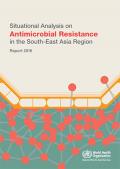
Resource | Publications,
This report is an account of the Region’s progress in developing and implementing NAPs. The report provides a platform to track what is going well, and to identify areas where extra efforts are needed. In the report, the regional roadmap for strengthening national AMR prevention and containment programmes is analysed with a specific methodology. The results gathered have been compiled to contribute to country profiles which make the report more useful.
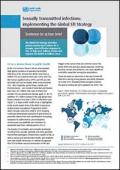
Resource | Publications,
In the 21st century, there is still an unacceptably high global incidence of sexually transmitted infections (STIs). Around the world, more than a million STIs are acquired every day. Some viral STIs, like human papillomavirus (HPV) and HIV, are still incurable and can be deadly, while some bacterial STIs – like chlamydia, gonorrhoea, syphilis and trichomoniasis – are curable if detected and treated.
The Global STI Strategy describes priority actions that countries can take as part of a stronger and more effective response to STIs, to help save millions of lives and improve the health of millions more. The range of actions includes strengthening data monitoring, STI prevention, early diagnosis, and patient and partner management, as well as initiating approaches to reach the most vulnerable populations.
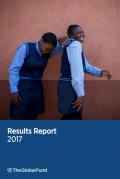
Resource | Publications,
This report highlights the great achievements that have been made by the Global Fund partnership, supporting programs that have saved more than 22 million lives, while building healthier communities and stronger economies. We have bent the trend lines of tuberculosis and malaria – two of humanity’s ancient foes – and we have prevented AIDS from reaching its catastrophic potential.
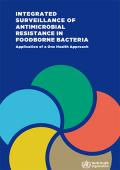
Resource | Publications,
The present guidance was developed with the support of the WHO Advisory Group on Integrated Surveillance of Antimicrobial Resistance (AGISAR) to assist countries and other stakeholders in the establishment and development of programmes of integrated surveillance of antimicrobial resistance in the foodborne bacteria (i.e., bacteria commonly transmitted by food) by taking a One Health approach. This guidance document replaces the previous version published in 2013.
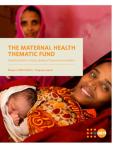
Resource | Publications,
This report highlights the key results achieved over Phase II of the Maternal Health Thematic Fund (MHTF), from 2014 to 2016, structured around the three cross-cutting principles of accountability, equality of access and quality of care, as outlined in the MHTF Business Plan Phase II (2014-2017). The report foregrounds the MHTF’s role in supporting health systems strengthening, and addresses its catalytic nature, its promotion of sustainability and its strong emphasis on advancing innovation. A vision and direction are outlined for the third phase of the MHTF, which will be further elaborated in a forthcoming Business Plan Phase III (2018-2021).
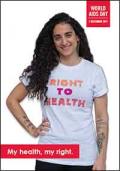
Resource | Publications,
The right to health is the right of everyone to the enjoyment of the highest attainable standard of physical and mental health, as enshrined in the 1966 International Covenant on Economic, Social and Cultural Rights. This includes the right of everyone, including people living with and affected by HIV, to the prevention and treatment of ill health, to make decisions about one’s own health and to be treated with respect and dignity and without discrimination.
Everyone, regardless of who they are or where they live, has a right to health, which is also dependent on adequate sanitation and housing, nutritious food, healthy working conditions and access to justice.
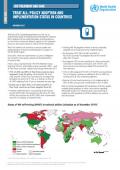
Resource | Fact Sheets,
With the 2016 Consolidated guidelines on the use of antiretroviral drugs for treating and preventing HIV infection, WHO updated and launched new policy recommendations on the clinical and service delivery aspects of HIV treatment and care, and raised the bar to treat all PLHIV (Treat All). WHO has worked with countries to ensure uptake and implementation of these recommendations in support of the to the 90-90-90 targets.
This fact sheet present data for 194 WHO Member States – including 139 low- and middle-income countries – and 35 Fast-Track countries, respectively through November 2017.
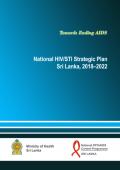
Resource | Guidelines,
The NSP for HIV/STI, 2018-2022 has been developed with technical guidance provided by a National Steering Committee and financial support from the Global Fund for AIDS, TB and Malaria (GFATM). During the process of development, inputs were taken from relevant stakeholders from DGHS, NSACP, officials from peripheral STD clinics, community based organizations (CBOs), nongovernment organizations (NGOs), networks of People Living with HIV (PLHIV) and representatives of key populations (KPs) through various meetings and discussion.





